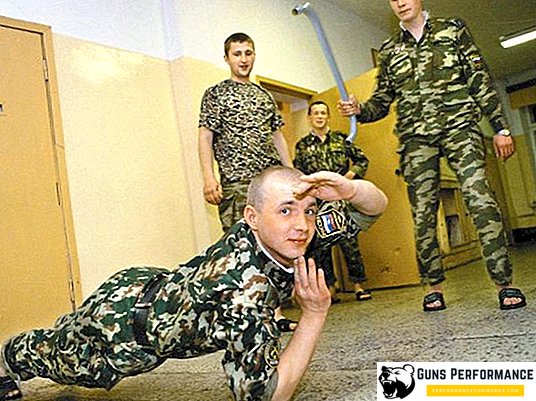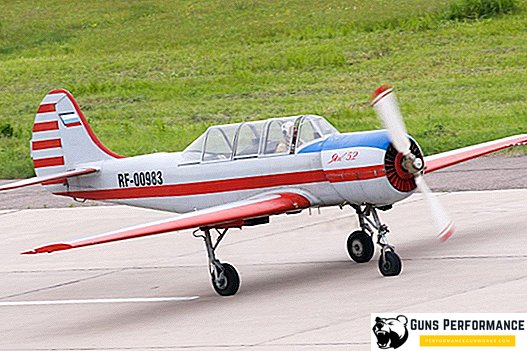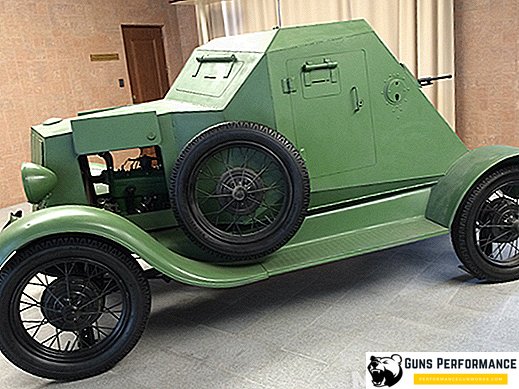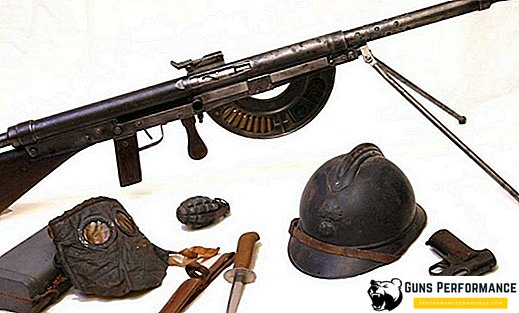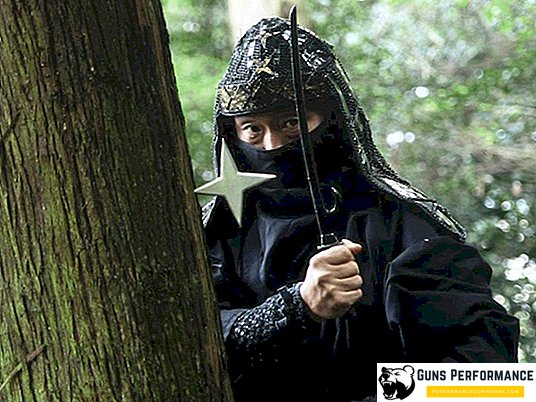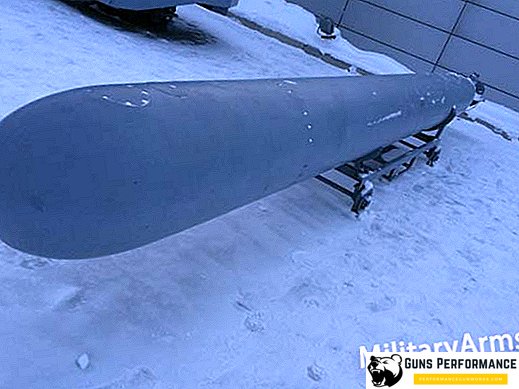Mikhail Ilyich Koshkin - Soviet designer, developer of military equipment, creator of the legendary T-34 tank. The future brilliant mechanic was born into a large peasant family in the village of Brynchagi (Yaroslavl Region) on December 3, 1898. Mikhail's childhood turned out to be short-lived - at the age of 14 he had to go to Moscow to earn money. In February 1917, he was drafted into the army and became a private in the Kerensky army. Soon he was wounded and returned from the Western Front to Moscow.
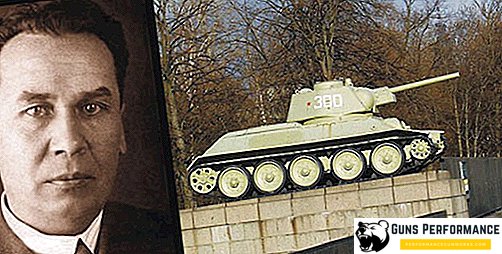
The October Revolution seriously influenced the fate of Mikhail Ilyich. He went to serve as a volunteer in the railway troops and was enlisted in the crew of an armored train. Perhaps it was then that interest in military technology awoke in him, which in many years would be translated into the main task of his life - the T-34 tank.
Study and trip to Vyatka
In 1921, after another injury, Koshkin was sent to study at the Communist University. At the end of the university course, he went to Vyatka, where he became an assistant director of a confectionery factory. This may seem surprising, but Koshkin was a professional pastry chef: from the age of 14 he worked in Moscow factories as an apprentice, and then as a master.
Quite quickly, the factory to which he was appointed became one of the best enterprises of Vyatka. An interesting document can be found in the local museum fund - the minutes of the factory committee meeting, where the team’s request to detain Koshkin is indicated so that he can prepare himself a good successor.
Mikhail Ilyich himself dreamed of a serious technical education. The country needed skilled engineering personnel. During the day, he “raised his feet” to the confectionery factory, and at nights sat at the books, preparing for admission to the technical university.

Technical vocation takes over
At the age of 30, he fulfills his dream and becomes a student at the Leningrad Institute of Technology. Studied student Koshkin selflessly, giving science all his time. The production practice of the future mechanical engineer in designing tractors and automobiles was held at the Gorky Automobile Plant. The intern immediately received a fairly serious post of master of the defective department. The management of GAZ liked the young specialist so much that a petition was sent to the People's Commissariat of Heavy Industry to return Koshkin to the company after graduating from the university.
But fate decreed otherwise: Mikhail Ilyich had a pre-diploma practice at one of the Leningrad factories in an experimental design bureau that was engaged in designing tanks. The 1st secretary of the Leningrad Regional Committee S.M. Kirov, and he drew attention to the extraordinary talent of the young designer.

After the end of the practice, Koshkin, at the request of the GAZ management, should have been sent to the automobile plant. But the design of tanks, with which he became closely acquainted at the Leningrad plant, was so impetuous to the engineer that he decided to go to the reception to Kirov and ask him to provide an opportunity to do business that is close to his heart.
After the conversation with the first secretary of the Leningrad regional committee, Koshkin could no longer worry about his fate. He is given the opportunity to return to the design office and do the design of tanks. Mikhail Ilyich takes an active part in the development of high-speed T-29 and medium-sized T-111 tank. Koshkin's work is celebrated at the highest level - he receives the Order of the Red Star to contribute to tank construction.

Kharkov period
In 1936, Koshkin was sent to direct the design bureau of the Kharkov Locomotive Plant. This period of life will be for the engineer and inventor of the most vivid and dramatic.
They met the new chief cautiously - an unknown person, and besides, the people's commissar of heavy industry Sergo Ordzhonikidze himself gave him broad powers. But Mikhail Ilyich quickly won the trust of the team with his simple, humane attitude towards his colleagues and the highest professionalism and design talent. In less than a year, the bureau, under his leadership, has developed a modernized BT-7 tank, on which a diesel engine was installed. For the world tank building this was a real breakthrough.

In the same year of 1936, a republican war began in Spain. The Soviet Union helps the Spanish Republic, sending its specialists and military equipment. Reports with photos of the BT and T-26 tanks burnt and torn by shells are beginning to arrive in Moscow. It becomes clear that the German anti-tank artillery supplied to General Franco, easily copes with the armor of Soviet vehicles.
Difficult task and confrontation with military ranks
In 1937, the design bureau headed by Koshkin was tasked with creating a new wheeled-tracked tank that received an A-20 index. Representatives of the Red Army's Armored Directorate Administration saw it more perfect than BT, but did not suggest any fundamental changes. Koshkin quickly realized the futility of such an approach. But he could not sabotage the order, so work on the project began, so Mikhail Ilyich at his own risk and creates a parallel design team, which was engaged in developing a tracked tank model (index A-32).

The essence of the tank is in three properties:
- Firepower
- Protection
- Mobility and maneuverability.
In the 30s of the 20th century there was no unity among the designers, which of these parameters should be considered the main one. Koshkin solved this problem by basing the concept of a new tank on all three properties, all of which were considered equally important.

Koshkin set before his subordinates the task of maximally simplifying the tank, while retaining outstanding combat performance. Later, this simplicity will play a decisive role: during the war, the production of the T-34 quickly deployed to the evacuated factories, and the crew training took place as soon as possible.
But that was later, and in 1938, the tracked tank project met with disapproval and serious resistance from high-ranking officials of the Soviet army. Surprisingly, even Colonel-General Pavlov, commander of tank units in Spain, supported the A-20 wheeled / tracked tank design, although he saw with his own eyes what was happening with such vehicles in modern combat.
The great courage of the creator of the T-34 tank had to be demonstrated at the main military council of the Red Army. Deputy Commissar of Defense G. Kulik forbade Koshkin to mention the existence of a parallel project, but Koshkin Not only ignored this ban, but also carried the A-32 layout to the board meeting. Moreover, the author of the development began his presentation with a tracked tank. However, Marshal Kulik abruptly cut off Koshkin’s speech, calling the caterpillars "galoshes." The Council decided to do A-20. But the designer was unexpectedly supported by Stalin himself. As a result, Koshkin was given freedom of action, the final decision was to be taken after comparative tests.

Inventor's triumph
In the summer of 1939, both tanks were submitted to the state commission. On both models, a positive verdict was rendered, but on the A-32 military trials it turned out to be a head taller than the wheeled-tracked model. All obstacles, including water, are overcome brilliantly, which causes applause of those present. December 19, 1934 the tank receives the name of the T-34 and is adopted for service.
But the story does not end there. In March 1940, another show of military equipment was organized. This time the show is made in Moscow. But Marshal Kulik prohibits taking the T-34 to the show, citing his decision by saying that the tanks do not have an officially established power reserve. Koshkin decides to go on T-34 from Kharkov to Moscow under its own power.

Seven hundred kilometers of snow-covered fields and roads led the creator of his brainchild. Together with the mechanics, they tested the car in harsh conditions. The show in Moscow was decisive - Stalin spoke positively about the new tank, which further strengthened the authority of Mikhail Ilyich and predetermined the fate of the T-34.
The heroic work of the great designer
The great designer and author of the T-34 was given little time by fate. The road to Moscow and back has undermined his health. On his return to Kharkov, Koshkin was urgently hospitalized with a bad cold. But even seriously ill, Mikhail Ilyich continued to work for wear, modifying the T-34. Unfortunately, his illness worsened; even the operation to remove the lung, performed by a surgeon from Moscow, did not help. In September 1940, Mikhail Ilyich Koshkin died.
Serial production of T-34 tanks began a month after the death of its creator. The chief designer at this point was A. Morozov. He continued to refine the tank, but he always recognized that the appearance of a combat vehicle so perfect for that time was the merit of Mikhail Ilyich Koshkin.


